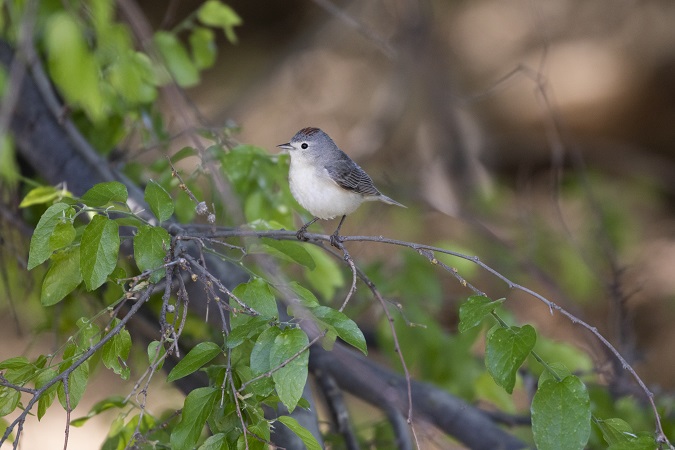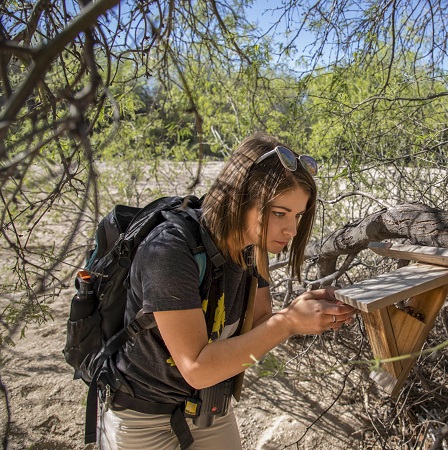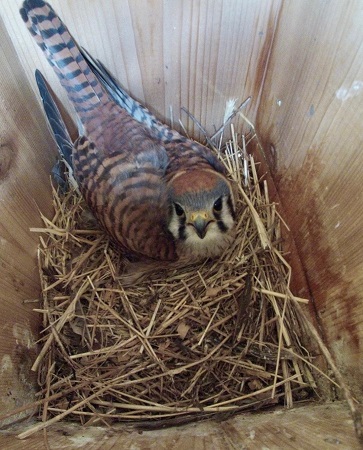Friends of Rio Vista distributes bimonthly bulletins via email and publishes key information from these bulletins here. To start receiving our bulletins, sign up here.
In this issue, we focus on updates from our partners about bird conservation in the park. We have more updates to share with you soon, but we’re sending this issue today to make sure that you can take advantage of a volunteer opportunity with HawkWatch International coming up next week (see below). Thank you so much for your support for protecting and enhancing the natural assets of Rio Vista.
Home Sweeter Home for Rio Vista’s Native Birds: Update from Tucson Audubon Society
As anyone who’s visited Rio Vista Natural Resource Park knows, birds are a key component of the park ecosystem. Birders are attracted to Rio Vista from all over Tucson, and the park is a very popular hotspot for eBird, an online bird-sighting database that any observer can contribute to. So far, 134 bird species have been reported — on 1,409 checklists — for Rio Vista.
Tucson Audubon staff are partnering with Friends of Rio Vista, through the Rio Vista Conservation Project, to identify bird conservation targets for the park and to recommend strategies for enhancing their habitats. Using both eBird lists and data from the Tucson Bird Count going back to 2005, Tucson Audubon staff members Jennie MacFarland, Olya Phillips, and Jonathan Horst have suggested a focus on four groups of birds and one charismatic species for conservation action. All of the species in these groups of high priority are classified as Species of Greatest Conservation Need in the Arizona Game and Fish Department’s State Wildlife Action Plan.


To give just one example: Every year in mid-March, Lucy’s Warblers (Leiothlypis luciae) arrive at Rio Vista from their Mexican wintering grounds. These tiny songbirds have a narrow breeding range in the U.S. Southwest and are characteristic of mesquite bosque. This species is in the “nestbox group” identified by Tucson Audubon staff. The organization has an active community-science program for installing and monitoring nest boxes for Lucy’s Warblers and recommends choosing appropriate sites for these boxes in Rio Vista because of the prevalence of mesquite trees but the lack of nest cavities.
Many thanks to Jennie, Olya, and Jonathan and to Tucson Audubon for laying the groundwork for birds in the Rio Vista conservation plan. We look forward to working with them in the long term to protect these treasured wild inhabitants of the park.
Little Raptors along the Little River: Update from HawkWatch International
In December, we alerted Rio Vista supporters to the presence of two large wooden nest boxes in the eucalyptus grove at the park. These boxes are part of a HawkWatch International long-term study of American Kestrels (Falco sparverius).

With Tucson Parks and Recreation’s approval, Mike Shaw (a member of the HawkWatch International board of directors and a Tucson resident) installed these boxes and has been monitoring them for the last two months. So far, kestrels have been seen near the nest boxes on several occasions, but Mike hasn’t yet observed any nesting activity. Mike welcomes observations from park visitors — you can get in touch with him directly at mshaw@hawkwatch.org.
At the invitation of homeowners, Mike has also placed kestrel nest boxes on private property along the Rillito corridor, where the Tucson portion of the study is focused. About half a dozen of these are in the RillitoBend Neighborhood, near Rio Vista. Some of the neighbors closest to the park have had a welcome surprise in their nest boxes: roosting Western Screech Owls (Megascops kennicottii). Kestrel nest boxes are also ideal nesting and roosting sites for these small owls.

Would you like to be involved in HawkWatch International’s kestrel study as a community scientist? You can start by joining a Zoom orientation for volunteers coming up very soon (Thursday, March 4). Click here for more information and online registration.
Many thanks to Mike, HawkWatch International, Tucson Audubon Society, and Tucson Parks and Recreation for making Rio Vista Natural Resource Park a site for this growing raptor project.
